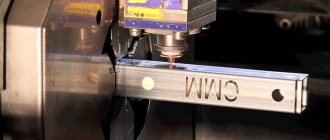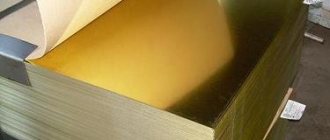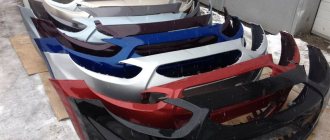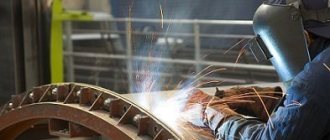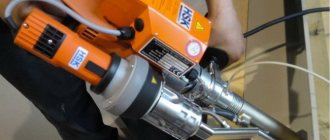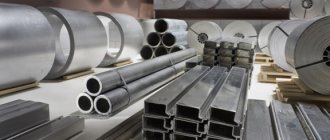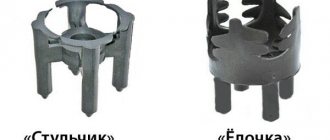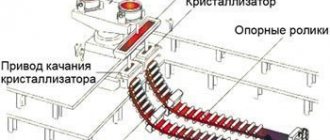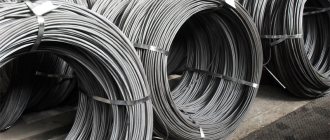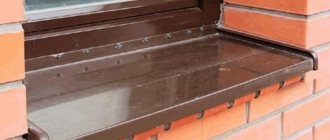Products made from polymer-sand composites have been produced in Russia for about 10 years.
Most of them are piece building materials of relatively small sizes: tiles, shingles, curb stones.
However, the strength of the material makes it possible to produce more massive structures, such as elements of decorative fences, rings for wells and septic tanks.
The technology for producing polymer sand products is also attractive due to the possibility of using recycled polymer material , which does not require deep cleaning.
Cheap raw materials, in-demand products, and tax breaks make it possible to open a highly profitable enterprise, receive commercial benefits and reduce the burden on the environment.
Components of polymer sand mixture
One of the advantages of polymer-sand mixtures is the simplicity of the composition. There is no standard recipe ; each manufacturer develops it at the factory independently, based on the availability of components.
Polymer sand
composite consists of :
- Filler . Pure sifted sand with a fraction size of up to 3 mm is considered one of the best materials. It should not contain clay and dusty inclusions, which reduce the strength properties of finished products. A negative factor affecting the quality of the mixture is considered to be increased humidity of the filler: evaporation during the preparation of the mixture and molding of finished products leads to the formation of voids. It is possible to use other mineral fillers: granite screenings, quartzite, basalt, glass, porcelain, broken ceramic bricks.
- Pigment . The technology for producing polymer sand products involves through coloring, so pigments are introduced into the mixture. It is possible to use any mineral and organic dyes. The most popular: chromium oxide, titanium dioxide, red lead, cobalt blue. The main selection criteria: availability, price and UV resistance.
- Binder . Most soft and hard thermoplastic polymers are suitable for the production of polymer-sand compositions. The most commonly used materials are high- and low-density polyethylene, polypropylene, PET, and ABS plastic. A mixture of several plastics can be used as a binder. In this case, it is necessary to ensure that they have approximately the same softening temperatures. Based on this requirement, it is necessary to avoid polycarbonates, tetrafluoroethylene (Teflon), and other refractory polymers from entering the raw material mixture. Sources of polymer binders most often are production waste (rejects, scraps, sprues) and consumption waste (MSW, used packaging). Depending on the configuration of the production line, unprepared, crushed plastics or granules can be used. Most manufacturers prefer recycled granulate because it is cheaper.
- Plasticizers . To increase the mobility of the mixture and facilitate the molding process, dibutyl phthalate, tricresyl phosphate and similar substances are introduced into the mixture.
- Reinforcement . Synthetic, organic and mineral fiber materials can be added to increase tensile and flexural strength. For reinforcement, asbestos, cotton floss, glass and acetate fiber are most often used.
Among the undesirable substances that can get into the mixture, experienced manufacturers note machine oils and aluminum foil.
The ratio of components is determined by manufacturing and testing prototypes.
The mixture contains:
- 23 – 38% polymer material;
- 60 – 75% filler;
- up to 2% pigments and other additives.
Main advantages
Polymer sand tiles have many advantages. During the production process, it is coated with a substance that is resistant to ultraviolet radiation. This indicates that even over time, the color remains original and the surface does not fade. The material copes excellently with the sharply continental climate; it is resistant to frost and can withstand about 200 cycles of freezing and thawing.
If we compare with metal roofs, the latter have a drum effect. The tiles do not corrode and are resistant to chemicals. It has water-repellent characteristics and prevents roof blooms. The material is a dielectric, so the roof does not require lightning protection. The canvases are easy to install; for this, the master does not need to have special skills. Even if you have to work with roofs of complex shapes, the waste will be minimal. Roofing made of polymer sand tiles can be used with a point load ranging from 150 to 360 kg.
Technology for composite preparation and product production
The production of polymer sand products includes the following stages :
- Crushing and agglomeration of plastic. This step can be skipped if you use ready-made secondary granulate.
- Mixing. All raw materials are loaded into a mixer and mixed.
- Heat. The mixture of sand and plastic is heated to a temperature of 90-500 °C until a paste-like mass with a homogeneous structure is obtained.
- Extrusion. The mixture, ready for use, is squeezed through the hole into the mold. Its quantity is controlled by scales.
- Pressing. A hydraulic press with adjustable force compresses a portion of the composite and forms the finished product.
- Freezing in shape. Cooling can be natural or forced (water), depending on the design of the molds.
After hardening, the products are removed from the molds and placed on a horizontal surface , where they lie for up to 24 hours, after which they are sent to the finished product warehouse.
Laying in difficult areas
1. Roofs of complex shapes, for example hip roofs with triangular slopes, require more careful marking. It should be started from the middle of the slopes, and elements should be placed in place on the ribs and valleys, trimming if necessary.
2. Before laying the tiles in the valleys, install an internal gutter 50-60 cm wide made of aluminum or galvanized steel. It is fixed in such a way that it ensures the tightness of this area. Another metal element is placed on top - it performs both additional sealing and decorative functions.
3. Tiles are laid along the valleys so that precipitation flows down the gutter without falling into the under-roof space. To do this, the distance from the axis of the gutter to the edge of the tile should be 13-15 cm.
4. The junctions with ventilation outlets, fireplace pipes, etc., before laying tiles around them, are sealed with special sealing tapes made of butyl rubber.
Equipment options
The two most well-known manufacturing plants for equipment for polymer-sand products are LLC “Association of BMP Enterprises” (Vologda) and PC “Polimerstroy18” (Izhevsk).
Both companies design and supply complete processing lines in a wide range of capacities.
The basic equipment set includes:
- Mixer . Mixing the components is accompanied by low energy consumption, but the quality of the finished product depends on the homogeneity of the mixture. Many entrepreneurs use cheaper mixers for general construction purposes. However, this solution can become a performance bottleneck. Specialized models are equipped with hoppers and belt conveyors that can ensure a continuous supply of raw materials to the next stage of production. When using a construction mixer, you have to stop it and reload it manually.
- APN (melting and heating unit). The mixture of raw materials is loaded into the receiving hopper of the device and fed into the working chamber using a screw. In this case, additional mixing of sand with polymer chips occurs. Working chamber conditionally divided into zones:
- preheating and moisture removal;
- melting;
- degassing.
- Vertical press . To form products of various thicknesses and volumes, units with a force range from 63 to 400 tons are used. When choosing a press, you should pay attention to the size of the table, the size and speed of the piston.
PC "Polimerstroy18" offers 5 equipment configuration options.
The production line, which requires a minimal investment of funds, includes a 15 kW APN and a press with a force of 63 tons.
This line involves the use of granules or crushed film and allows the production of small-sized products.
It is possible to increase the range and production volumes through the use of more powerful APN units (up to 64 kW), as well as several presses.
The manufacturer offers a number of options to reduce energy costs and improve product quality: variable frequency drive, tape and induction heaters.
The Association of BMP Enterprises supplies lines that include a crusher and an agglomerator, allowing you to prepare your own binder from waste, as well as general-purpose scales.
Calculation example
Given: Frankfurt mineral tiles, roof slope – 25°, slope length – 8760 mm.
Procedure:
- We find in the table. 1 PUT and LAT values
- The LAF value for mineral tiles is always 40 mm
- We find in the table. 4 value LAcp
- Calculating L
- Determine Ncalculated
- Round up and down
- Nlarger = 26 rows
- Nsmaller = 25 rows
- We calculate two adjacent values of the sheathing pitch (LA1 and LA2)
- LA1 = L/ Nlarger = 8400 / 26 = 323 mm
- LA2 = L/ Nsmaller = 8400 / 25 = 336 mm
- We estimate the permissible values of the lathing pitch (LA) at a slope of 25° (Table 6.)
Answer: LA1 is within the permissible interval, and LA2 falls outside it, therefore, you need to select the step LA1, it is equal to 323 mm.
Product range
The product range depends on the productivity of the production line, the pressing force and the configuration of the molds:
- Tile. The strength characteristics of the polymer-sand composite make it possible to produce products for paving sidewalks and roads with low traffic loads. The most popular tile sizes are: 330 × 330, 500 × 500. Thickness, depending on the design load, varies from 17 to 50 mm. Typically, manufacturers of polymer sand tiles make curbs, storm gutters and other paving elements.
- Roof tiles. Externally, the material is practically no different from its ceramic counterpart, but has significantly less weight. The mass of one element is usually 2 - 2.5 kg, and the load on the rafter system per 1 m2 is 18 - 23 kg. In addition to ordinary, ridge and wind tiles, the range usually includes elements for rainwater drainage and snow retention.
- Sewage wells. Recessed inspection devices for cable ducts and utility networks, as well as septic tanks, are manufactured in the form of prefabricated structures. They consist of a bottom, several rings and a hatch. Tongue-and-tongue joints, with the help of which the elements of the wells are connected to each other, ensure the alignment of the installation, sufficient strength to resist soil pressure and protection against the penetration of groundwater. In addition, wells made of polymer-sand composite are much lighter than their concrete counterparts, and therefore easier to install.
- Elements of fencing . Due to the high mobility of the polymer-sand mixture under all-round compression (during pressing), parts for fences are made from it, characterized by the complexity of their shapes and high decorative properties. The range of most manufacturers includes garden fences with a height of 25 - 50 cm, caps and parapets for protecting brickwork, infill elements, including openwork.
The polymer sand mixture is also used to make façade and plinth panels, siding and other products.
Features of the material
For the first time, such tiles appeared on the European market in the early 90s. Then the developers were looking for a replacement for the ceramic roof, one that would not differ much in appearance from the traditional material, but would have higher performance characteristics. Due to the rapid development of the polymer industry, this material began to be studied more carefully. As a result, polymer sand tiles appeared on the market . Its main difference from the usual one is its higher strength combined with lower volumetric weight. And not so long ago, the production of polymer sand tiles became available in our country.
Profitability
To determine profitability, it is necessary to calculate the costs of producing finished products and purchasing equipment, and take into account the demand in your region.
The cost of the technological line of LLC "Association of BMP Enterprises" starts from 2 million rubles.
However, you can also find cheaper equipment on the secondary market.
When calculating the cost of paving slabs (as the easiest product to produce), sum up:
- raw material costs;
- electricity tariffs;
- wages for the foreman and workers;
- rental fees for production and warehouse space;
- taxes;
- fare.
Experts' calculations show that the real cost of producing 1 m2 of polymer sand paving slabs is about 250 - 270 rubles, and the average market price is 500 - 550 rubles.
Thus, profitability can exceed the 100% threshold . The payback period for production during one-shift operation is up to six months. With a two-shift schedule, it is halved.
Calculation of the number of horizontal rows of tiles
Knowing the length of the slope and determining the position of the upper and lower rows of the sheathing, it is easy to calculate the pitch of the sheathing and, accordingly, the number of horizontal rows of tiles.
For clarity, let us turn to the calculation diagram (Fig. 5.).
Figure 5. Design diagram
Designations:
Lk – length of the structure (ramp); L – length of the section of the structure, equal to the sum of the sheathing steps; PUT – distance between the lower edge of the tiles of the first row and the lower edge of the first sheathing bar; LAT – distance between the outer edges of the first two sheathing bars; LA – stepwise pitch sheathing;LAF – distance between ridge and sheathing.
The calculation of the sheathing pitch, indicated in the diagram as LA, is carried out in 3 stages.
Stage 1: calculation of the total length of the slope, equal to the sum of the sheathing steps (L).
At this stage, you need to calculate the total length of the slope from the outer edge of the second row of sheathing from the bottom to the outer edge of the top row.
For all tile models, except for ceramic tiles “Opal” and “Emerald”: L= Lk – LAT – LAF “Opal”: L = Lk – LAT – LAF – 120 “Emerald”: L = Lk – LAT – LAF – 180
Stage 2: determining the estimated number of sheathing steps (Ncalculated)
To do this, you need to divide the found length L by the tabulated value of the average sheathing pitch (Tables 4 and 5).
Varieties of elements
When installing a polymer sand roof, the following elements are used:
- Ordinary tiles are rectangular elements that are used directly over the entire roof area of a building under construction. They have identical dimensions and side locks, so it is possible to connect the parts in such a way as to best prevent leakage due to possible precipitation. In the upper part of the ordinary tiles there are holes for fastening, and on the back side of the element there are special hooks that help facilitate installation work. Its dimensions: length - 410 mm, width - 315 mm.
- Ridge elements are used when joining the side elements of the roof. The correct installation of the remaining roof elements depends on correctly laid ridge tiles. Their parameters are as follows: length - 330 mm, width - 210 mm
- Wind elements are additional elements that play a decorative role, hiding layers of insulation underneath. Thanks to them, the wind does not blow under the polymer sand coating, and the attic space is reliably protected from moisture.
Manufacturing process
The composition of polymer tiles includes about seventy percent quartz sand, twenty-five percent polymer, and about five percent various additives and dyes.
The entire production technology can be divided into steps:
- Preparatory process of polymers. If ready-made polyethylene granulate is used, the process is simplified. And if it is recycled, then they are first crushed.
- Drying. All components must be dried;
- To increase any properties, ductility, fire resistance, etc., additives are used;
- The granular plastic is mixed with other components and everything is heated to the point of melting;
- The heated mixture is poured into molds;
- Using a special press, the product is stamped under high pressure;
- Once the mold has cooled, the product can be removed.
Employees
Since the lines are automated, the staff should include an operator (his salary in the regions is about 30-40 thousand rubles/month), a quality control operator, an auxiliary worker (salary 20-30 thousand rubles) and a sales manager. The functions of the latter can initially be performed by the business owner himself.
Maintaining accounting records, if you have opened an LLC, can be outsourced - this is about 5-10 thousand rubles.
The production of sewer manholes can operate in 2 shifts lasting 12 hours, producing about 50 units of products during this time.
ELECTRICITY CONSUMPTION per shift
- A crusher with a capacity of 300 kg/h consumes 22 kW/h. To produce a mixture of 3,072 kg, 755 kg of polymer is required. To prepare it, the crusher will work for 2.5 hours and consume 55 kW of energy.
- APN - 29 kW/hour when warming up, when working around the clock with a heated APN, consumption is reduced by 4 times, i.e. calculation: 7.25 kW x 24 hours = 174 kW/day
- Hydraulic press – 5.5 kW/hour. When molding a product, the program on the presses is designed for electrical consumption. Energy in the mode of raising and lowering the upper punch, when forming electric. No energy is consumed. The running time of the slider is 40 seconds per day, 96 pieces x 40 seconds. = 3,840 sec. = 64 min. = 1.07 hours of press work
- Consumption per day 5.89 kW.
- Hydraulic press - 11 kW/hour consumption per day: 11.77 kW
- Mixer - 5.5 kW/hour 1 batch - 3 min. Mixes 0.5 tons per mixing. During the shift, 3,072 tons of mixture for 96 pieces of hatches. Per day 18.4 minutes. Electricity consumption 1.83 kW.-
- Lighting - 12 kW/hour
Total electricity consumption per day is 260.49 kW/day, 12-hour shift is 130.25 kW.
The cost of electricity per 1 kW/h is 4.03 rubles. Thus, the cost of electricity is 525 rubles. In 12 hours, 48 hatches were produced. The cost for 1 hatch will be 11 rubles.
Depreciation of equipment is established by the enterprise independently
Cost of one hatch
| Cost type | for 1 unit |
| Raw materials | 160 |
| Electricity | 11 |
| Salary | 46,88 |
| UST, 30% | 14,06 |
| Renting premises | 3,47 |
| Equipment depreciation | 8,12 |
| TOTAL | 243,53 |
Creating a sheathing
The sheathing for composite tiles is done using wooden blocks 50x50 mm in section, if there is no more than one meter between the supports (in the case of a larger distance, the cross-section is made larger). It is placed in the direction from bottom to top. The lower bar is fixed at a distance of 20 mm from the outermost link of the counter-lattice and performs the function of securing the first row. It is better to connect them on counter-lattice links, and the length of each of them should exceed a length equal to the distance of 2 spans between the supports.
It is required to maintain a distance of 370 mm between the lower edges of the parts. This is necessary to create a lock between adjacent sheets of coating, provide high-quality protection from moisture, protect against gusts of wind and for aesthetics.
Advice. To comply with the conditions, make suitable templates from any materials.
The distance from the top row of the sheathing to the ridge is not regulated. It is advisable to select the length of the rafters equal to the length of a single piece of material. Sheathing bars intended for laying the ridge are installed on both sides of it at a distance of 13 cm. Ridge bars intended for installing rib ridges should initially be trimmed and attached on both sides of it, at a distance of 12 cm.
If there is a valley, parts of the sheathing are located on both edges from the valley line at a distance of 180 mm.
Sales channels
Your clients are management companies, urban housing and communal services enterprises, and private construction companies. Potential clients do not necessarily have to be from your city - actively try to enter other regions, offer more interesting terms of cooperation.
Large purchases worth tens of millions of rubles are made through a tender system. To participate in competitions, you need to register on the relevant websites, where information about government procurement and requests from commercial enterprises are published, and declare your desire to participate in Another sales method is telephone calls, negotiations and meetings.
You should also not refuse to advertise your product on the Internet.
Advantages of polymer tiles
Polymer sand tiles consist of the following components:
- quartz sand (3/4 of the composition);
- high-density polyethylene (25% of the composition);
- a small part of other petroleum products.
This composition makes the material plastic and resistant to negative external influences.
The advantages of the product include
- durability – the polymer coating lasts up to 30 years;
- stability - the material is not afraid of frost, moisture, heavy loads, liquids containing acid and oil;
- Decorative – tiles are often made in any shape. Moreover, it often has a glossy, matte or structured surface. And also when making polymer tiles, craftsmen can use a wide range of colors;
- no toxic fumes when exposed to direct sunlight;
- reusable and easy to repair if damaged;
- ease of cleaning the coating (tiles are easy to clean);
- wide scope of application. Polymer sand tiles are used as a decorative covering for private courtyards, parking lots, playgrounds and sidewalks in public places.
